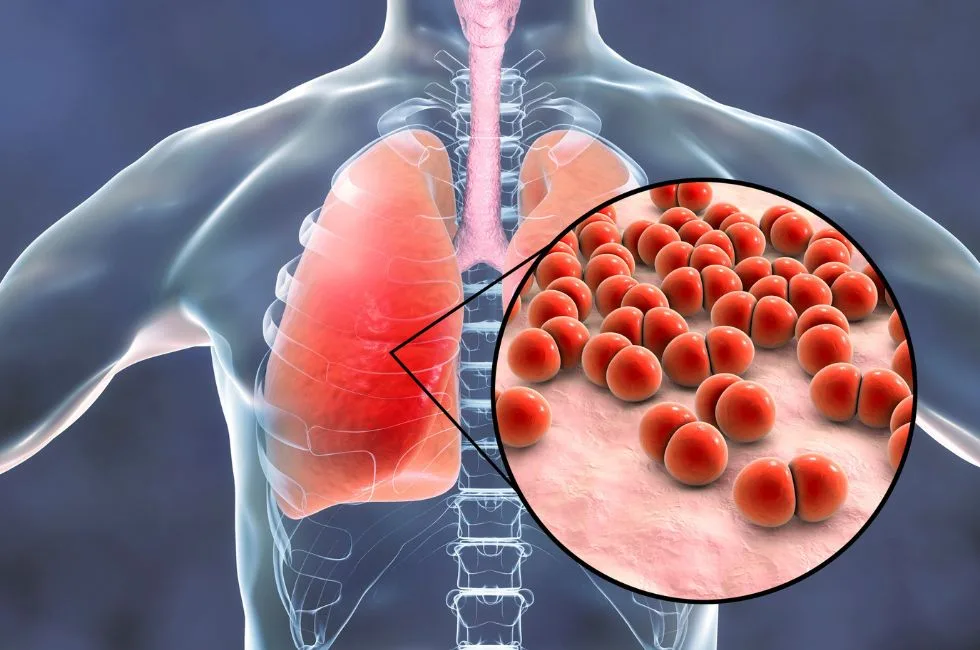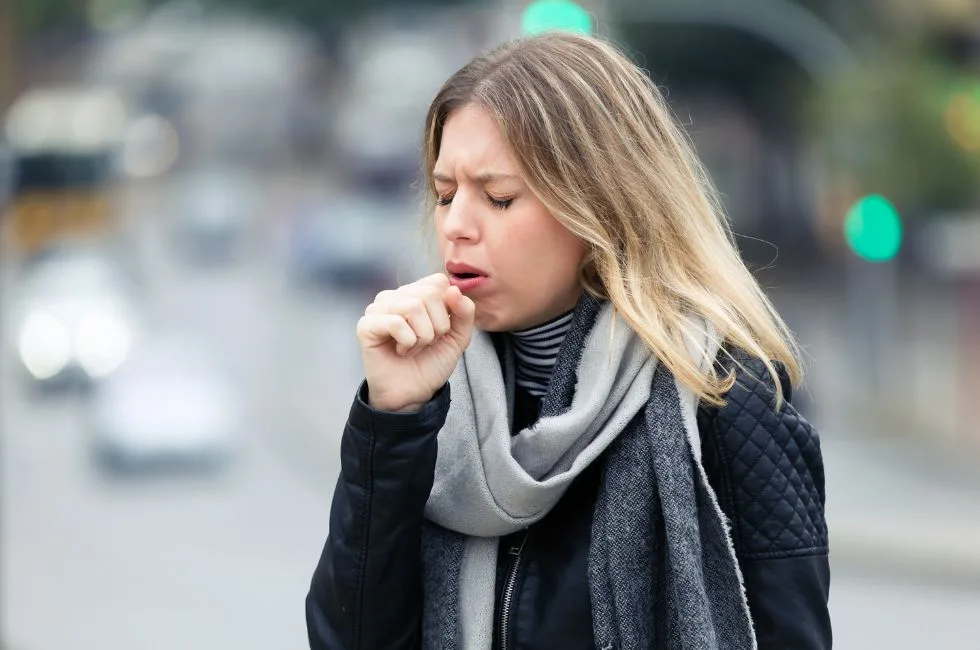Imagine pneumonia had a less aggressive cousin that didn’t want to put you in bed all day—that’s walking pneumonia for you. It’s a tricky customer because it masquerades as a common cold or flu. The medical folks call it atypical pneumonia because it doesn’t quite fit the mold of the more severe cases of pneumonia that can send you searching for the comfort of your blanket fortress.
Walking pneumonia is caused by bacteria-like organisms called Mycoplasma pneumoniae. These little critters are not as mean as the ones causing the regular, more severe pneumonia, but they sure can be a nuisance. Unlike the typical bacterial pneumonia, this one sneaks up on you with subtler symptoms, and before you know it, you’re coughing and wheezing and wondering why that cold just won’t say goodbye.
Causes of Walking Pneumonia

The name to remember is Mycoplasma pneumoniae, a bacterium with a knack for causing respiratory infections, especially in the lungs. This tiny troublemaker is quite different from the usual bacteria that cause more severe forms of pneumonia. It’s less about a dramatic entrance and more about a stealthy approach, affecting your respiratory system bit by bit.
But how exactly does it cause walking pneumonia? Well, imagine this bacterium as a tiny invader that enters your body when you least expect it—usually when someone with the infection coughs or sneezes around you. Those airborne droplets are like tiny Trojan horses, carrying the bacteria into your lungs. Once there, they start to multiply, leading to inflammation and that pesky cough that just won’t quit.
And it’s not just coughing and sneezing; close contact with an infected person can also pass it on.
Remember, even if you’re healthy, your body might still play host to these bacteria without showing any symptoms. But in some cases, they decide to throw a party in your lungs, and that’s when you start feeling the effects.
Signs You Might Have Walking Pneumonia

The most common symptoms of walking pneumonia include:
- A persistent cough that can be dry or produce mucus
- Fatigue that makes your usual activities feel like a marathon
- Mild chest pain that flares up when you breathe deeply or cough
- A sore throat that makes your favorite food feel like swallowing sandpaper
- Low-grade fever that comes and goes like a moody spring weather
- Occasional chills and sweats as if your body can’t decide on the right temperature
Unlike typical pneumonia, walking pneumonia doesn’t usually knock you off your feet, which is why many people don’t even realize they have it. They carry on with their daily routine, hence the term “walking.”
Diagnosing Walking Pneumonia

Your healthcare provider might start with a physical exam, listening to your lungs and checking for all the signs we’ve talked about. But to see what’s really going on, they might suggest a chest x-ray. This isn’t just any photo op—chest x-rays are like the superhero’s x-ray vision, revealing any inflammation or abnormalities in your lungs that might indicate pneumonia.
Sometimes, they might also run blood tests or check samples of mucus from your cough to see if our not-so-friendly Mycoplasma pneumoniae is indeed the culprit.
“Is it serious?” you might wonder. Typically, walking pneumonia doesn’t roll out the red carpet for drama, but getting a clear diagnosis is crucial. It helps to ensure you get the right treatment and can skip the part where things potentially get worse. Think of it as the difference between catching a small leak and dealing with a full-blown flood in your basement.
Treatment Options
Firstly, if it’s confirmed that Mycoplasma pneumoniae is your uninvited guest, your doctor might prescribe antibiotics. Just remember, antibiotics won’t work if your walking pneumonia is caused by a virus, which is why that diagnosis part is super important.
What else can you do? Lots, actually. Rest is your new best friend. Give your body a break so it can use that energy to fight the infection. Drink plenty of fluids to stay hydrated—think of it as flushing out the toxins. And if you’re a smoker, this is the perfect excuse to quit, because your lungs need all the love they can get right now.
And if the cough is driving you nuts? There are cough syrups and expectorants that can soothe your throat and help you cough up any mucus. But always check with your healthcare provider before turning your medicine cabinet into a mini-pharmacy.
Home Remedies and Self-Care

First up, rest. And no, not the ‘I’m-resting-but-also-scrolling-through-my-phone’ kind of rest. Real, quality rest. Your body is like a phone battery; it recharges faster when you’re not using it. So, curl up with a good book or binge-watch that show everyone’s been talking about—doctor’s orders.
Hydration station! Water is your ally. It helps thin the mucus in your lungs, making it easier to cough up. And if water’s too bland, try herbal teas or broths. Just keep the caffeine and alcohol on the down-low—they’re not so helpful for hydration.
“Can food be medicine?” Absolutely! Nutritious, balanced meals can bolster your immune system. Think fruits, veggies, lean proteins, and whole grains. And a little chicken soup wouldn’t hurt—it’s not just comfort food; it’s packed with nutrients that are good for your immune system.
Breathing exercises can also be a big help. They might feel a bit silly at first, but they can increase lung capacity and help clear out those pesky mucus guests.
And don’t forget the power of hand sanitizer and good old-fashioned soap and water. Wash your hands like it’s your job, especially after you cough or sneeze, to prevent spreading the infection to others.
Lastly, a humidifier in your room can add moisture to the air, which can make breathing easier and soothe irritated lungs.
Preventing Walking Pneumonia
Hygiene. It’s simple but effective. Regularly washing your hands with soap and water can stop those tiny bacterial invaders in their tracks. And if soap and water aren’t on hand, a good hand sanitizer will do the trick.
The vampire sneeze. No, it’s not the latest Halloween trend. It’s about sneezing into your elbow, just like a vampire pulling up their cape. This move keeps those airborne droplets from your sneeze or cough from going viral (pun intended).
What about masks? They’ve become quite the accessory lately, and they’re not just for fashion. Wearing a mask, especially when you’re feeling under the weather or around someone who is, can be a great barrier against respiratory infections.
Keep your distance. I’m not saying you should be antisocial, but avoiding close contact with folks who are sick can save you a lot of tissues and soup. This is especially true in crowded or enclosed spaces.
And let’s not forget vaccines. While there’s no specific vaccine for walking pneumonia caused by Mycoplasma pneumoniae, staying up-to-date with your vaccinations can help prevent other types of respiratory infections.
Staying healthy overall is key. Regular exercise, eating right, and getting enough sleep can boost your immune system, making you less likely to catch walking pneumonia or at least fight it off more easily if you do.
So, what’s your story? Have you ever had walking pneumonia? How did you handle it? What tips and tricks worked for you? Share your experiences in the comments below and let’s help each other out. After all, the path to good health is one we all walk together.




